#Ilex
Text

Ilex, a shadow sorcerer owlin that I helped @kered555 design!! This was a very fun concept and I just love designing characters 🥺 So here, have a totally normal spooky bird.
instagram - twitter - more
#owlin#dnd#dnd 5e#dungeons and dragons#dnd owlin#dnd art#dnd character#dnd artist#dnd oc#d&d#dnd community#ttrpg#character design#character art#ttrpg community#jackz comms#ilex
184 notes
·
View notes
Photo



ɅPɅRTMENT CLUB sketch tier rewards!
some from may and one from april! in order:
@goblinoracle
@turquoise-deer
@literaldeerirl
if anyones interested in these!! i got a patr30n up!! more on that here
#i still duno if writing patreon gets u in trouble on any of these sites s2g#ty so much for the support btw!#anyway#hope u all enjoy these lil sketches#furry#furry artwork#furry art#furries#sketches#sketch#doodle#not my oc#vpvrtment#kenzie#goblinoracle#turquoise-deer#ilex#chase#literaldeerirl
254 notes
·
View notes
Text
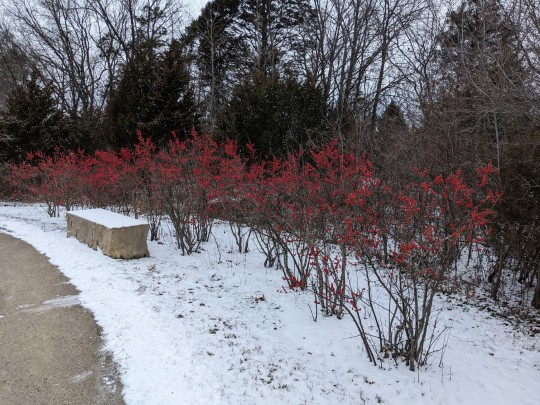
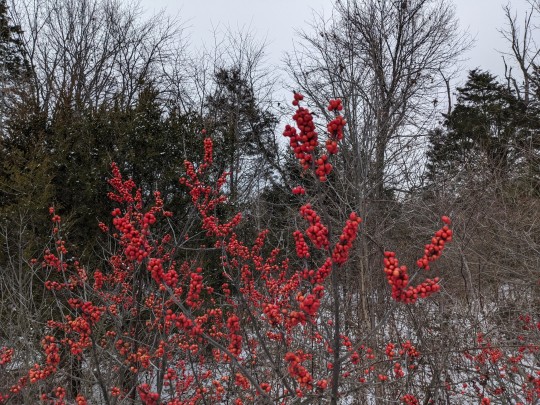



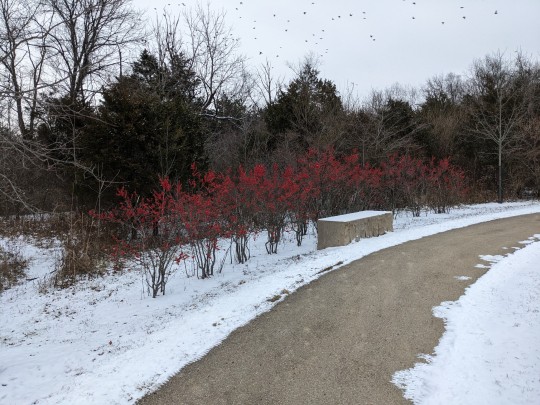
Winterberry holly living up to it's name
#landscape#landscape photography#photography#nature#nature photography#naturecore#snow#winter#january#holly#winterberry#ilex#trees#woods#berries#forest#kentucky
43 notes
·
View notes
Text
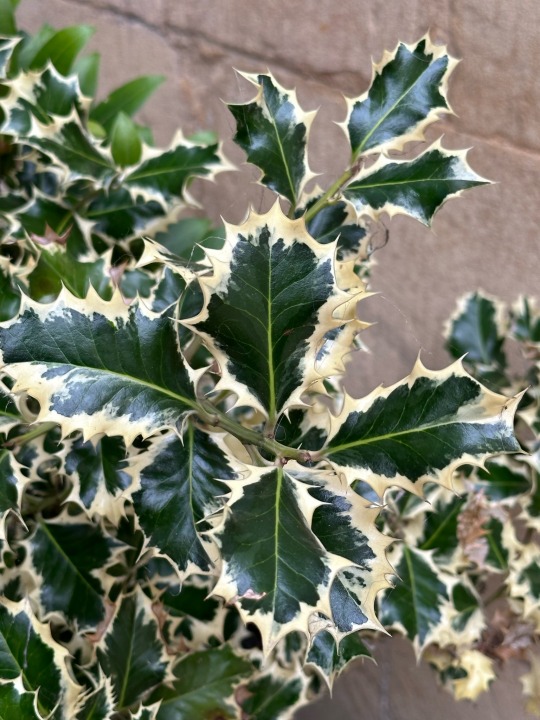

Plant of the Day
Friday 15 September 2023
Outside the Stamford Library, Lincolnshire, was this container which included the evergreen Ilex aquifolium 'Argentea Marginata' (broad-leaved silver holly). This female holly has white-margined, dark green leaves and masses of bright red berries in autumn through to winter. It's particularly suitable for urban or coastal sites since it copes well with pollution and salt-laden air.
Jill Raggett
#ilex#broad-leaved silver holly#holly#plants#evergreen#shrub#variegated#container#horticulture#foliage
63 notes
·
View notes
Photo

Today we succeeded something very important and Brom needs a goddamn nap
Aboleths are the worst creatures in existence
#dnd#dnd art#centaurs#cervitaur#floof in dnd#its ART#do you know how many nat 20s occurred to make this happen#from EVERYONE today#statistically ridiculous and we are screaming#mentor dad was in a very bad way#Thalo was SO distressed#but damn the plays achieved today *chef kiss* immaculate#we absolutely ruined one (1) aberration's day#with an awesome plan and I am proud of my group and DM#Thalo#Brom#Rowan#Aralia#Ilex
524 notes
·
View notes
Text

gulmp.
14 notes
·
View notes
Text

Source: @name-that-flower
The pumpkin patch has been one of my most popular designs as of late. (You probably know why.)
Green dianthus
Ilex
Salal
Marigold foliage
Crocosmia pods
Euonymus
26 notes
·
View notes
Text

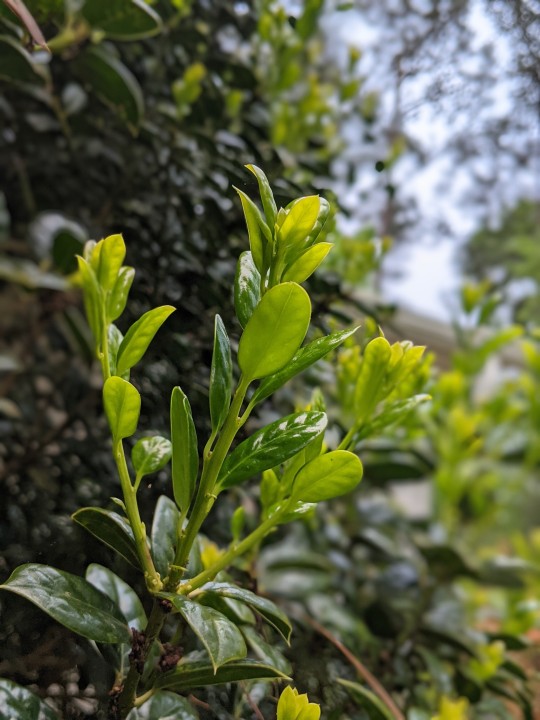
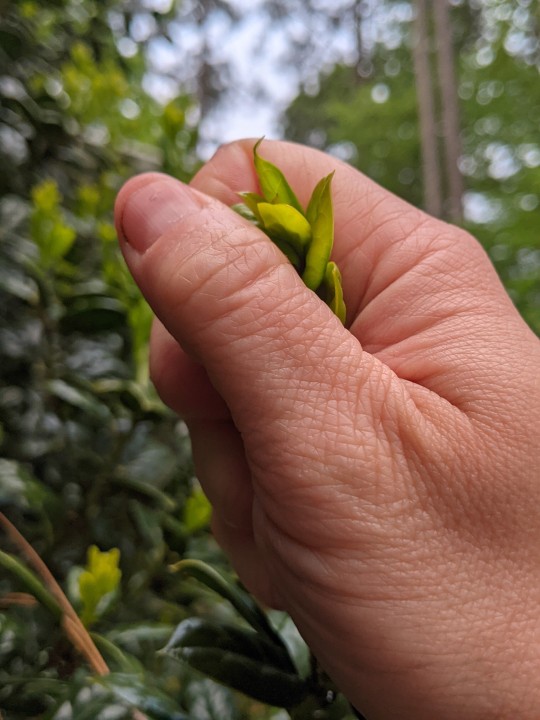
Mature holly leaves: dark, spiky, hard, unfriendly
Young holly leaves: soft, gentle, bright. You can hug them.
72 notes
·
View notes
Text
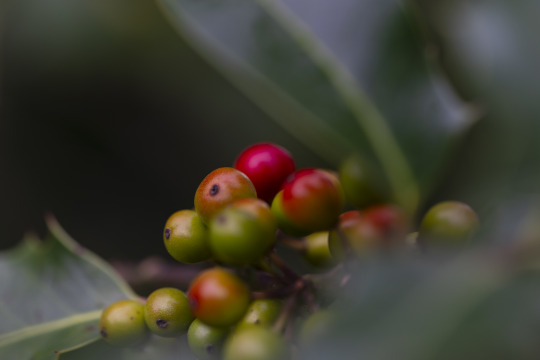
Reifende Früchte der Stechpalme (Ilex aquifolium)
#berries#ilex#macro#close up#detail#growth#Ilex aquifolium#leaves#nature photography#photographers on tumblr#Stechpalme#natur-nah-dran.de#autumn#red#rot#Kristian Papp#Oktober2023
29 notes
·
View notes
Photo

finished this after taking a break from working on my 3000th pony drawing
#my art#brainiacs art#ilex#ilex holly#nomai#outer wilds spoilers#outer wilds oc#outer wilds#space goat#fanart
44 notes
·
View notes
Note
could X himself answer one of our questions if he wanted?

Hello, little ones.
-X
11 notes
·
View notes
Text

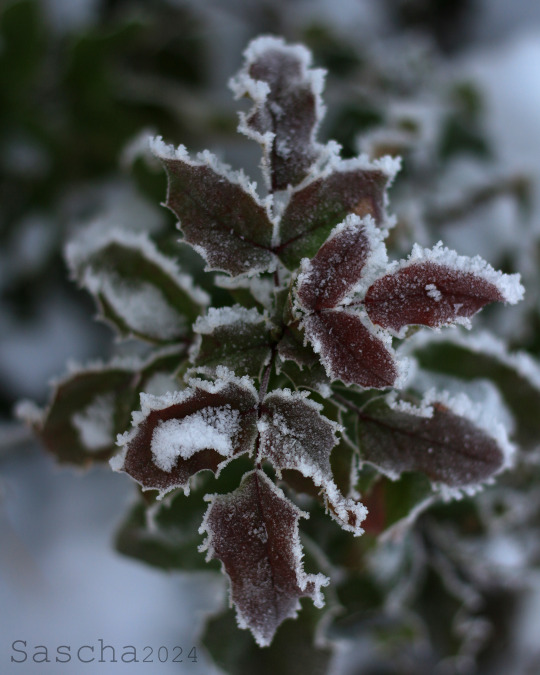


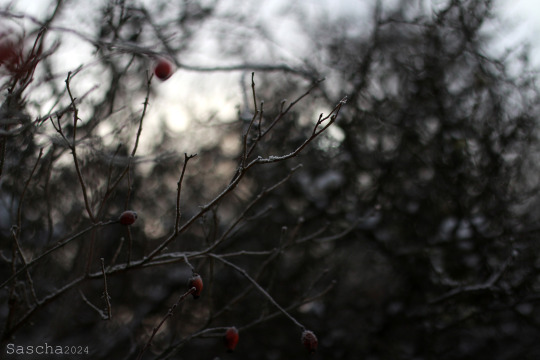
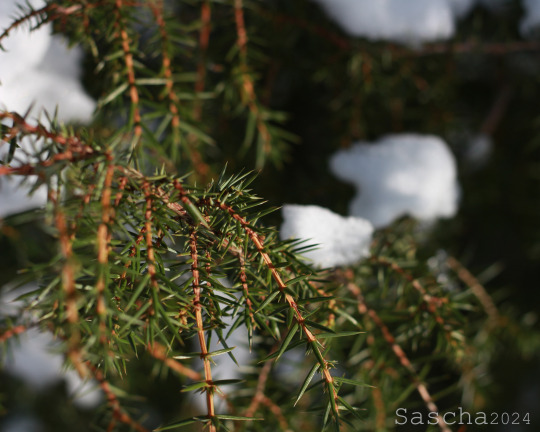


A Dyke on a Hike
#Hiking#snow#Dyke#nature#wanderlust#explore#woods#photography#nature photography#trees#plants#Ilex#winter#pine trees#cold#snowflakes#tree#Canon#Canon eos 700d
9 notes
·
View notes
Note
begging you to call it smallidarity like a civilised man /silly
SMALLIDARITY IS MUCH BETTER THAN WHAT I SAID
#i love just making shit up instead of looking for actual ship names#unless the actual ship names r better than what i come up with#ilex#asks
17 notes
·
View notes
Text

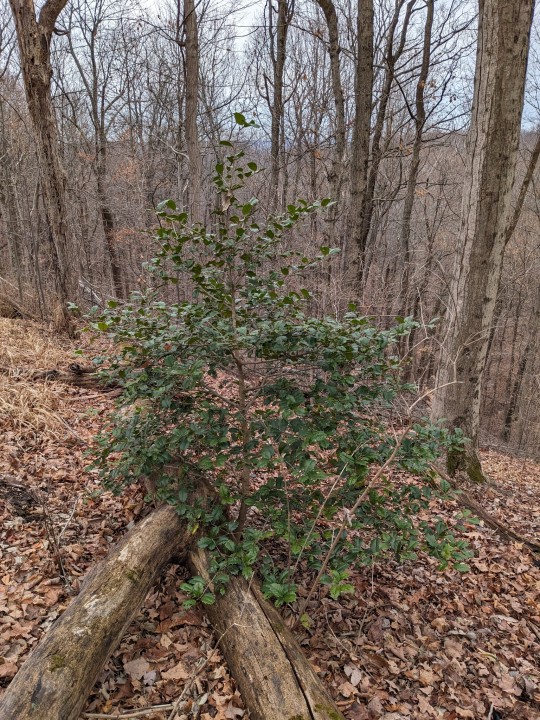
This lone holly won't be the only thing green here for long
#landscape#landscape photography#photography#nature#nature photography#naturecore#trees#woods#forest#holly#ilex#winter#hills#knobs#ilex opaca#american holly#jefferson memorial forest#kentucky
31 notes
·
View notes
Text
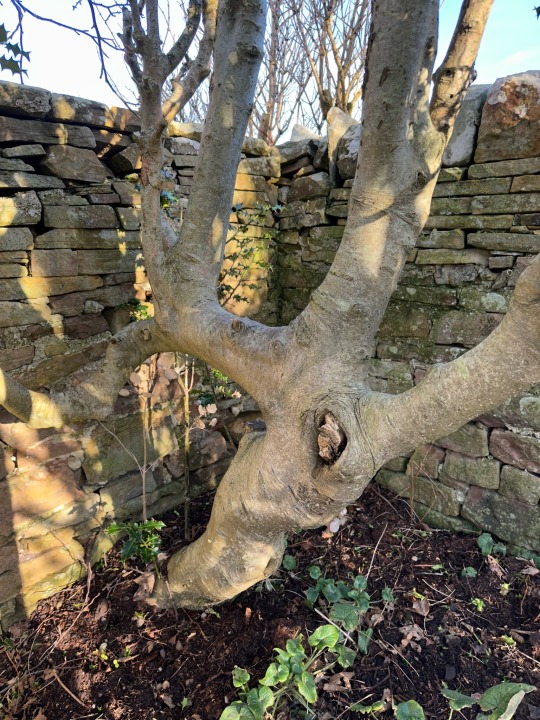



Plant of the Day
Tuesday 21 February 2023
In the sheltered growing conditions of the Marengo Garden, St Margaret’s Hope, Orkney, an Ilex aquifolium (holly) tree has a characterful trunk providing interest in the border. This evergreen tree was providing protection from the rain for a local cat who was watching the volunteer gardeners!
Jill Raggett
#ilex#holly#evergreen#tree#trunk#cat#seat#whalebone#wall#stonewall#plants#gardens#horticulture#writtledesign#garden#orkney#scotland
142 notes
·
View notes
Text
How to Identify American Holly
Click here to learn more about the How to Identify article series.
Name: American Holly (Ilex opaca)
Range and typical habitat(s): Typically southeastern United States, from eastern Texas to the Atlantic coast, southern Missouri, and central Florida to scattered portions of New England. iNaturalist observations also place it in portions of Michigan, Illinois, Ohio, and Oklahoma, showing some expansion compared to the 2014 BONAP map, so its range may be expanding in response to climate change. In most of its range it is an understory tree growing in the shade of larger species. However, in Florida’s scrub habitat it grows as a shrub.

Photo by Derek Ramsay, GNU FDL 1.2
Distinguishing physical characteristics (size, colors, overall shapes, detail shapes): At first glance American holly looks quite similar to the European holly (Ilex aquifolium) so commonly used got holiday decorations (more about the differences between the two below.) It has medium to dark green oval-shaped leaves, sometimes with a yellowish tint, whose margins (edges) have concave curves between sharp points that are regularly spaced; large leaves may reach three inches long.

Photo by Famartin, CCA-SA-4.0-INTL
The American holly’s leaves have a leathery, stiff texture, and may appear waxy, and the underside is paler, often yellow in color. Each leaf has a central vein (midrib) that is depressed, appearing almost like a deep crease. Thinner veins branch off of both sides of the midrib. Some leaves may display smooth margins instead of the more typically spiky ones, especially when they are high enough to be out of the reach of browsing herbivores like deer.
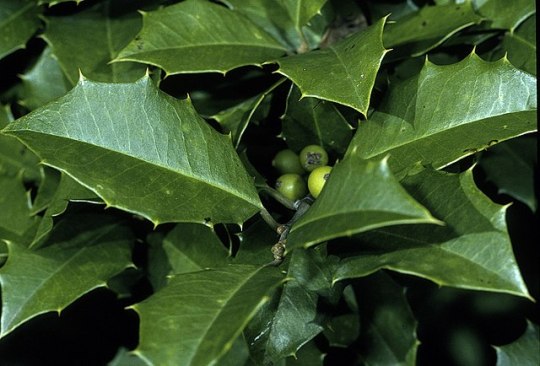
The foliage stays green throughout the year rather than being shed in fall; a given leaf may stay on the tree for up to three years before being displaced by a new replacement leaf. The leaves grow in an alternate pattern along a twig, with each leaf growing a little further along the twig than the last. The tree’s branches and trunk are covered in pale gray bark that is relatively smooth, but may have horizontal and vertical striations, along with various nodes and bumps, and might also play host to white patches of microlichen colonies. Other lichens, as well as mosses, also may add color to the American holly’s bark.
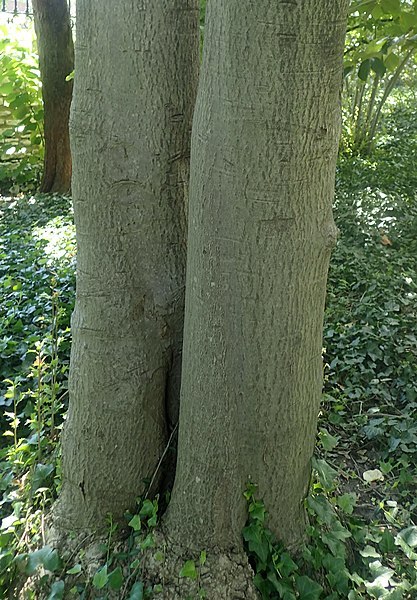
Photo by Krzysztof Ziarnek, CCA-SA-4.0-INTL
An exceptional specimen of American holly can reach almost 100 feet tall when mature, though it grows slowly. Such large trees are generally a century or more old, and the oldest on record was just a few years shy of 150.
The flowers of American holly are small (1/2″ or less across) with green centers and four (sometimes six) white petals that are broad with a rounded end, and whose tips curve back toward the plant. They grow in clusters of several flowers sprouting from one spot. American holly is dioecious, meaning that there are female and male plants; the males tend to reach sexual maturity a few years earlier than the females, but they all are generally reproducing by the age of ten.
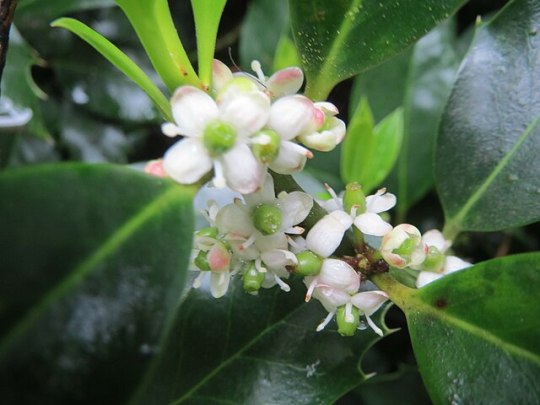
When fertilized by insects the female flowers then turn into the well-known red berries. Technically these are drupes rather than true berries, with four seeds apiece, and while they start out green they ripen to a bright red. The berries are popular with birds like cedar waxwings (Bombycilla cedrorum), but are toxic to humans and our pets.
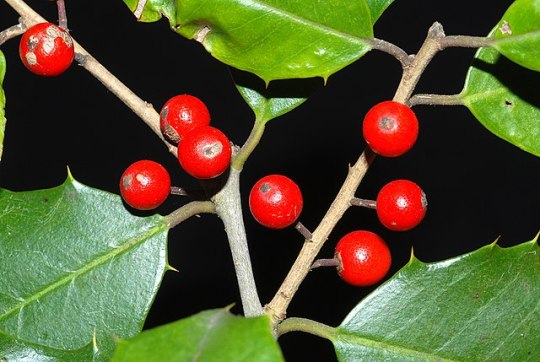
Photo by Douglas Goldman, CCA-SA-4.0
Other organisms it could be confused with and how to tell the difference: Due to their similarity, American holly and European holly may easily be confused at first glance, and both prefer the understory of a forest. However, the European species does not grow as large. The leaves of European holly are darker and have a glossier appearance; the edges may also be more warped where those of American holly lie comparatively flat. Moreover, European holly grows more commonly along the west coast of North America, and is more sparse throughout American holly’s native range, especially outside of cultivated spaces.

European holly (Ilex aquifolium)
Yaupon holly (Ilex vomitoria) is another species native to the southeastern North America, particularly the Gulf Coast states and the southern third of the Atlantic coast. It is a much smaller shrub that rarely exceeds thirty feet tall, and its leaves are round with serrated or scalloped edges rather than the pointed margins of American holly. The petals of the flowers may not curve as much as on American holly.

Yaupon holly (Ilex vomitoria)
Dahoon holly (Ilex cassine) also grows in the extreme southeastern United States, from Louisiana to the southern tip of North Carolina, and primarily along the coastline except in Florida where it can be found across much of the peninsula. Its leaves are longer and more slender than those of American holly, and the margins are almost entirely smooth except for a series of very small spikes.

Dahoon holly (Ilex cassine). Photo by Douglas Goldman, CCA-SA-4.0
Possumhaw (Ilex decidua) has long, slender leaves with a gently pointed tip and serrated edges. This deciduous plant drops its leaves in fall, unlike the evergreen American holly.

Possumhaw (Ilex decidua)
There are other plants that have similar leaves to American holly but that grow out of its range, such as the various species of Oregon grape (Mahonia spp.) in the Pacific Northwest, and holm oak (Quercus ilex), for which the genus Ilex was originally named.
Further reading:
USDA: American Holly
North Carolina Extension Gardener Plant Toolbox: Ilex opaca
Missouri Botanical Garden Plant Finder: Ilex opaca
Native Plant Trust: Ilex opaca – American holly
University of Connecticut Plant Database: Ilex opaca
Did you enjoy this post? Consider taking one of my online foraging and natural history classes or hiring me for a guided nature tour, checking out my other articles, or picking up a paperback or ebook I’ve written! You can even buy me a coffee here!
#holly#American holly#North America#native plants#Ilex#shrubs#plants#plant identification#nature identification#botany#trees#ecology#conservation#biodiversity#long post#nature#Yule#Christmas#holidays#scicomm
10 notes
·
View notes